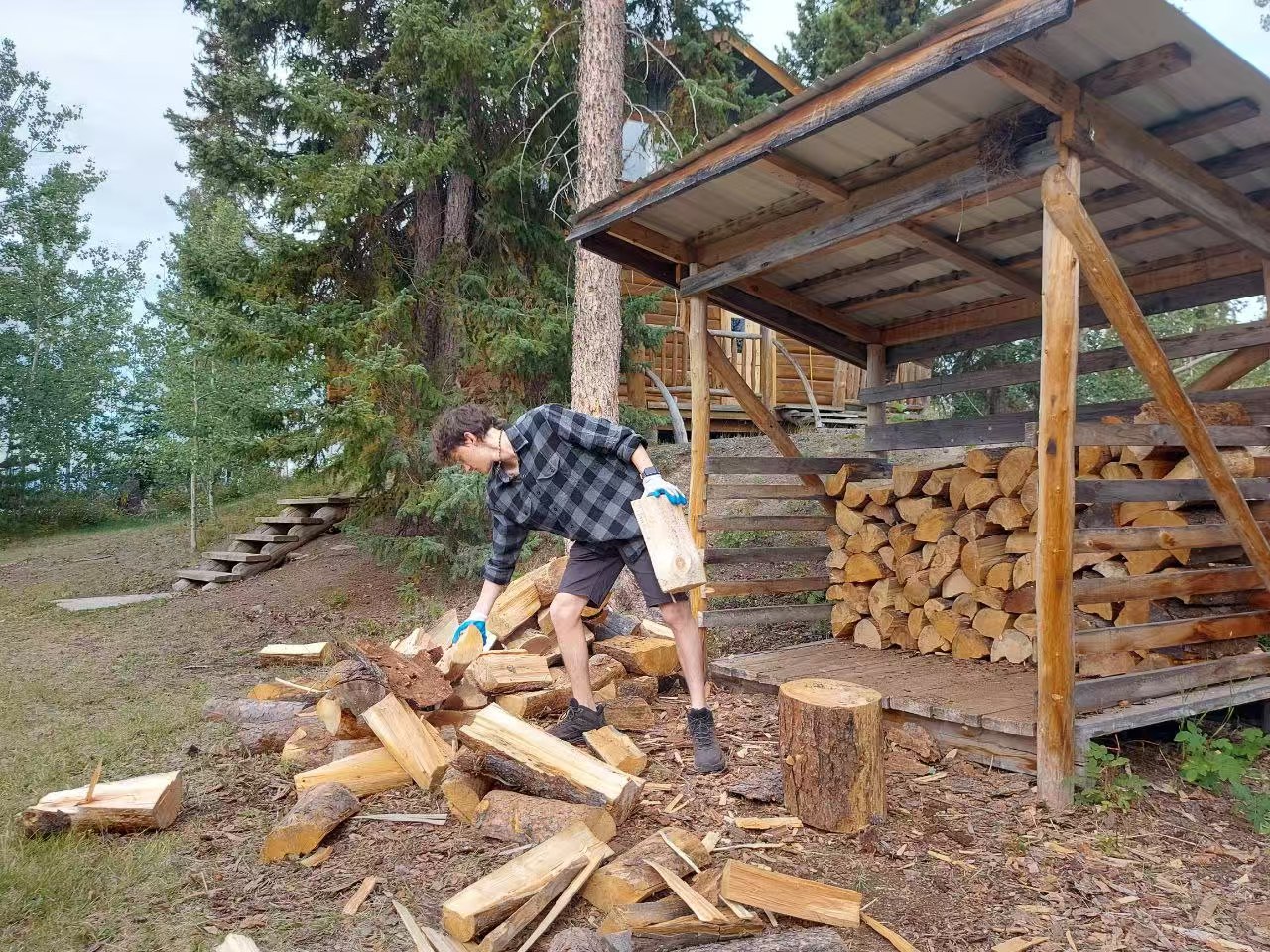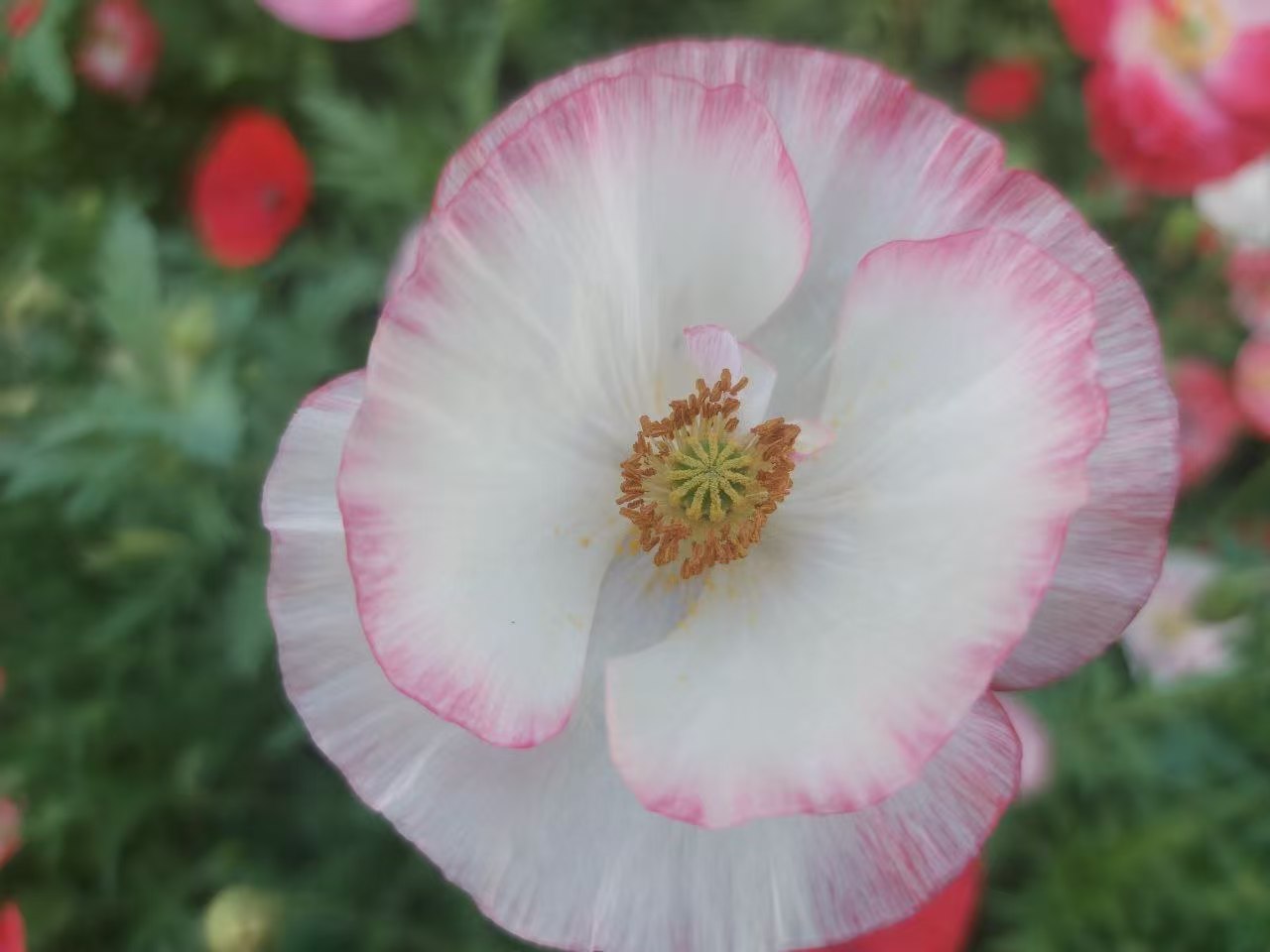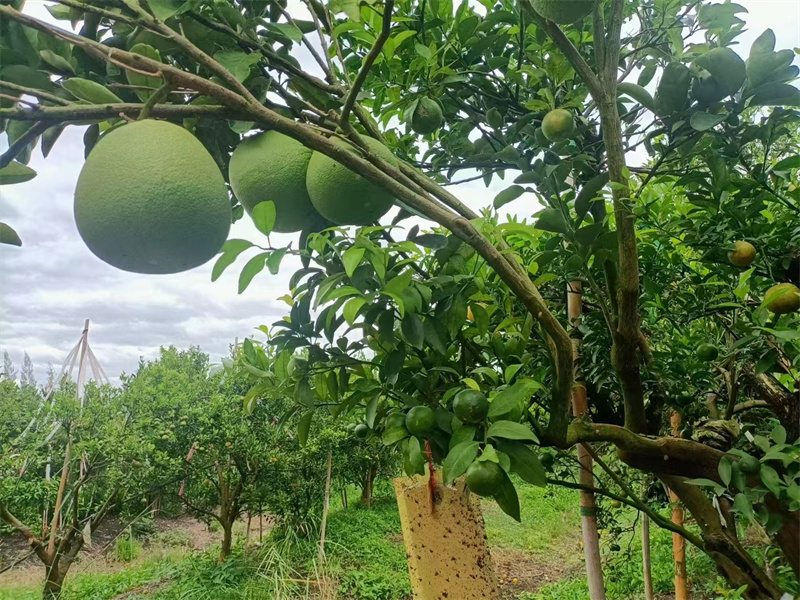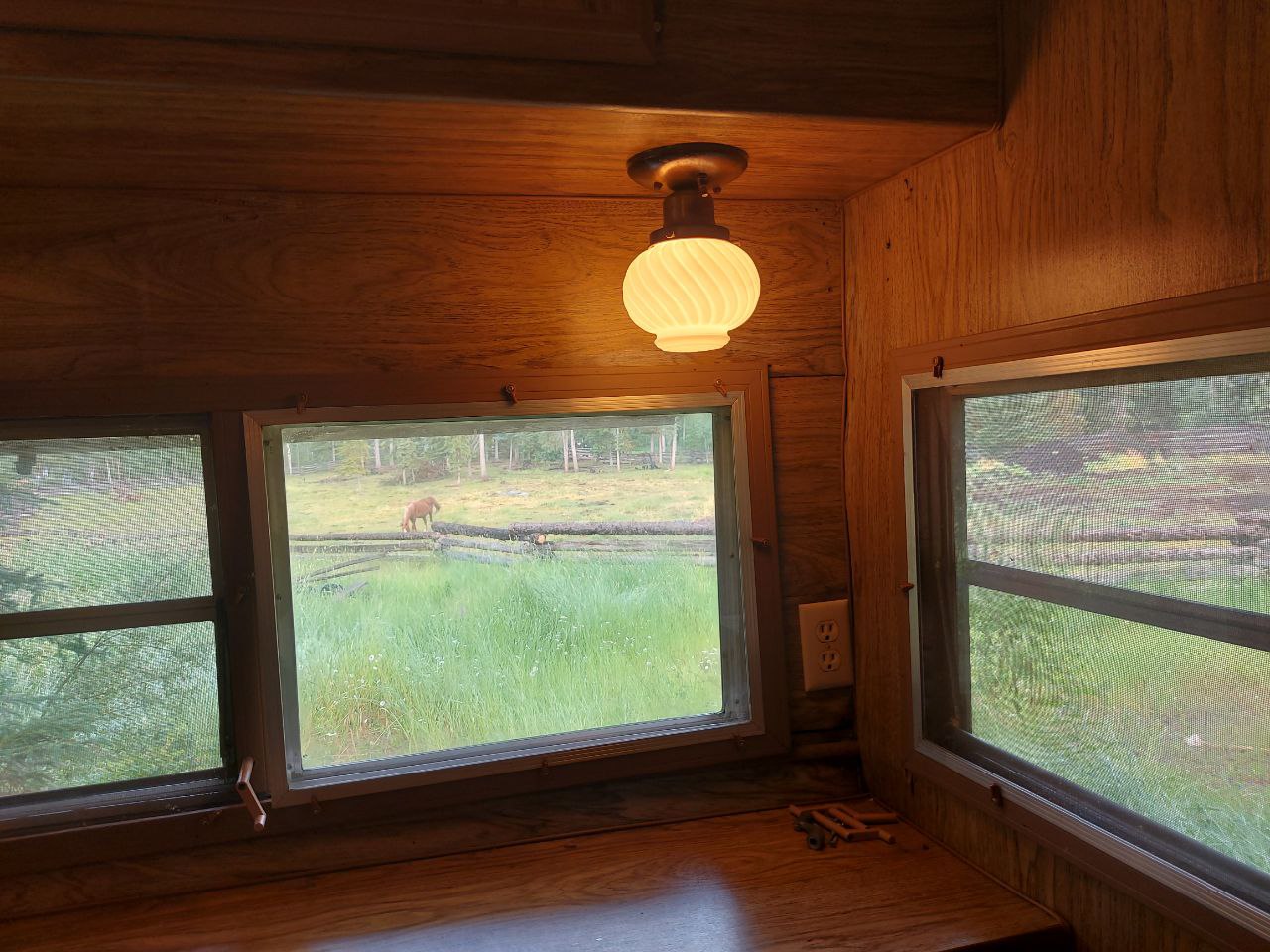|
Permaculture Growing in the Arctic
Paulo Bessa
Monday, 18th April 2016
Paulo Bessa explains how despite a limited growing season in Iceland, he was able to grow a huge variety of fruits and vegetables by creating microclimates and shelters.
The Arctic is the last frontier of food sustainability, where northern lights dance during nine months of icy winter, volcanoes stop aeroplanes and people believe in elves. This is my permaculture story in Iceland.
How I Got There
During my first holiday to Iceland in 2009, I didn’t know that my life was about to change ... I loved the country so much, I moved there. Until then, I had only practised permaculture in temperate climates, not in the dramatic Arctic climate which was about to test my limits.
My first garden in 2010 showed me that most vegetables can be grown in Iceland, but only when you give them good shelter from the Arctic winds. I grew salad, carrots, celery, cabbage, turnips, potatoes – even zucchini with some effort – but not beans or pumpkin.
In 2011, I joined the intentional community of Sólheimar in Iceland (see ‘Ecoliving in Iceland’, PM44 for an article about the community). I began planting what is possibly the most northern food forest in the world. Besides the use of geothermal heated greenhouses, increasingly popular in Iceland, I focused on growing food outdoors, searching for solutions to deter the challenges of the harsh Icelandic climate.
Permaculture in a Crazy Climate
The Arctic climate is really crazy: nine months of icy winter, September to May, with blizzards or freezing rain every week and frequent hurricane winds. Only birch, spruce, poplar and rowan survive these harsh conditions, but they can provide windbreaks.
Often it freezes to -20ºC (-4ºF), without a snow cover, followed by repeated thaws, testing the limits of most shrubs. It is only above freezing in June and July. Plants enjoy a short and fast growing season due to perpetual daylight, yet the Arctic summer is cool and rainy, rarely above 18ºC. By August, the season is over, as frosts return.
To top it all, this is one of the most volcanic places on Earth, with vast ash deserts and ice caps. Soil is mostly gravel, often without vegetation, thus pioneering species are needed to build good soil. To practise permaculture in this land you need to find creative solutions.
Cold Climate Solutions
The most obvious solution is growing indoors. Iceland is blessed with geothermal heated water and therefore it’s easy (and affordable) to have a heated polytunnel year-round. However, Arctic winters demands artificial light from October onwards.
Outdoors every step is made towards: 1. Building or planting wind shelter. 2. Maximizing heat in the soil and the surrounding air. 3. Selecting adapted species and varieties. 4. Planning timings wisely.
I found the following solutions worked: – Raised beds facing south, with a local tundra mulch. – Windbreaks (poplar trees, raspberries, sunchokes and plastic frames). – Nootka lupins used as pioneer soil-building species. – Black volcanic gravel or seaweed, added to increase soil temperature. – Focusing on specific productive staples that survive a chilly summer: broad beans, barley and oats, peas, potatoes, swedes, kale. – Fleece cover during hard frosts. – Choosing hardy varieties like Siberian tomatoes and baby corn, that can crop outdoors if given enough shelter.
Vegetables grow sheltered by plastic windbreak barriers (broccoli, mints, perennial lovage, tomatoes, calendula) Timing is key in Iceland, when growing annual vegetables A design for a future food forest
Dreams of an Icelandic Food Forest
In 2012, I had the idea of growing 100% of my food. Food self-sufficiency has always been one of my ultimate goals. I estimated that 400m2 (4,300ft2) could grow most vegetables and staple crops. However, growing annuals in Iceland requires precise timing, patience, and trial and error. The difficulties made me consider perennial edibles as an alternative, but which ones? Greens like Good King Henry, nettles, rhubarb, Turkish rocket and dandelions; perennial onions like Babington leek, ramps or walking onions; perennial roots like black salsify, skirret, marshmallow and burdock.
Slowly I envisioned a food forest. As well as hardier cherry and apples trees, I planted cold resistant shrubs, like Siberian pea, Eleagnus, juneberry and sea buckthorn. Windbreaks consisted of sunchokes, currants and raspberries. Alpine strawberries were perfect groundcover, and so were self-sowing kale greens, which became bountiful, and were processed into delicious kale chips for winter food.
I also tried perennial grains. My favourite energy-rich source of perennial food are chufas (Cyperus esculentus) and tiger nuts that are very easy to grow indoors, even in containers.
There are many other exciting possibilities: Korean pine as an edible nut. Hardier hazelnuts (Corylus tibetica, C. ferox, C. mandshurica, C. heterophylla). Grafting apples and pears onto the native rowan. Alnus as a nitrogen fixer; Princess trees (Paulownia tomentosa) as biomass. Hardy fruit trees: bird cherries (Prunus padus from Russia, P. pensylvanica and P. virginiana from Quebec), Siberian apricot (P. sibirica), Siberian crab apple, Ussurian pear (Pyrus ussuriensis), hawthorn, elderberry and Arctic kiwi. Hardy citrus (to -15ºC / 5ºF), kumquat, citrange and citrandarin, grafted into trifoliate orange.
Cherry tree guild, with comfrey, angelica, meadowsweet, ramps and groundnut, sheltered by poplar trees behind Some key species: Nootka lupins, rocoto peppers, purple peas, kale, and Good King Henry / chives
Facing the Ultimate Challenges
In 2013, we had no summer. It snowed in June, we had frost in July, and August was depressive, cold and drizzling endlessly until snow returned. Some apple and cherry trees died. Berries also failed. Iceland’s difficult climate humbled my food forest ambitious.
Nevertheless, I also had some successes. I had selectively seed-saved Siberian tomatoes and created the first Icelandic variety of outdoor tomato that survived frost and cropped in that cold summer. Indoors, millet, quinoa and amaranth grew easily, and quinoa even cropped outdoors, whereas wheat failed! Perennial ‘tree’ pepper Rocoto (Capsicum pubescens) was another exciting discovery.
Then 2014 tested me again. A major volcanic eruption happened – the largest lava eruption in 200 years in the entire world. So much sulphuric gas was released that air was sometimes unbreathable and plant leaves burned in acid rains. However, after some months, the eruption stopped and the garden slowly recovered. I never intervened as the plants only suffered minor damage and recovered completely afterwards. Had the eruption been closer, this would have been a different story.
Early in 2015 I left Iceland for personal reasons. The permaculture gardens remained behind, some left to nature, others left to friends.
Perhaps a food forest is a utopian dream in Iceland but it is still possible to grow plenty of food that far north. With a warming climate, these icy regions could see a population increase in the future, and a boom in permaculture projects. Yet the climate poses unique challenges. Hopefully my experience will be of value for those at the northern edges of the inhabited world.
|  Haha, I’ve got a helper now!
Xuefeng
September 8, 2024
(Translation edited by Q
Haha, I’ve got a helper now!
Xuefeng
September 8, 2024
(Translation edited by Q
 Haha, I felt young again!XuefengYesterday morning, after breakfast, I started ch
Haha, I felt young again!XuefengYesterday morning, after breakfast, I started ch
 Papaver rhoeas: The Designated Flower of Lifechanyuan
by Xuefeng
August 20, 2024
Papaver rhoeas: The Designated Flower of Lifechanyuan
by Xuefeng
August 20, 2024
 Joyful Games and Warm Welcome for Gabi at Lifechanyuan's Thai Home
Qianzi Celest
Joyful Games and Warm Welcome for Gabi at Lifechanyuan's Thai Home
Qianzi Celest
 Chilean Girl Gabi Experiences the Life of Lifechanyuan Thailand Second Home Comm
Chilean Girl Gabi Experiences the Life of Lifechanyuan Thailand Second Home Comm
 Another Clean and Tidy Joy House
In the tourist resort Holy Land Home, the guide
Another Clean and Tidy Joy House
In the tourist resort Holy Land Home, the guide
 Post time 2017-10-19 15:11:05
|
3587views0replies
Show the author posts only
|View large image
Post time 2017-10-19 15:11:05
|
3587views0replies
Show the author posts only
|View large image
 |Descending
|Read mode
|Descending
|Read mode









 Favorites
Favorites Relay
Relay Shares
Shares Collection
Collection